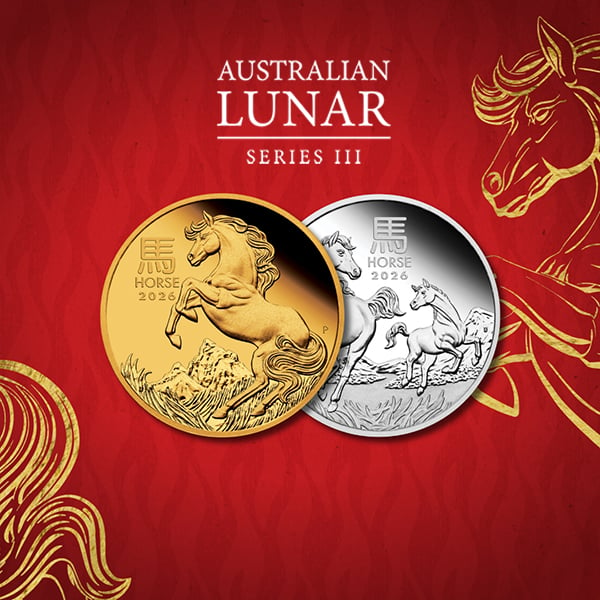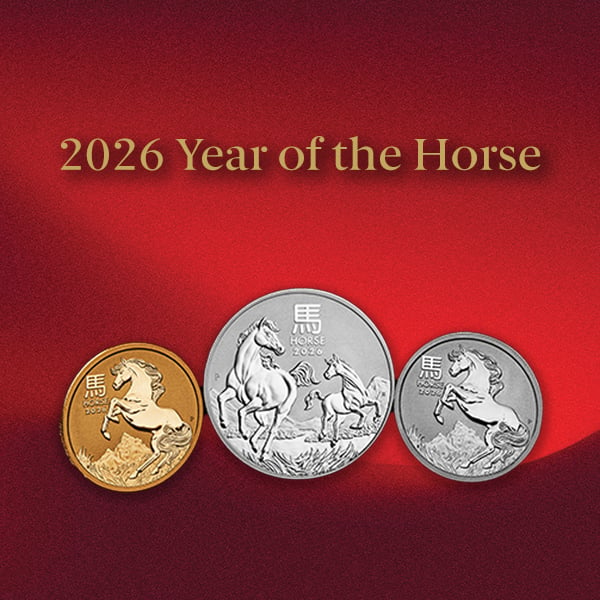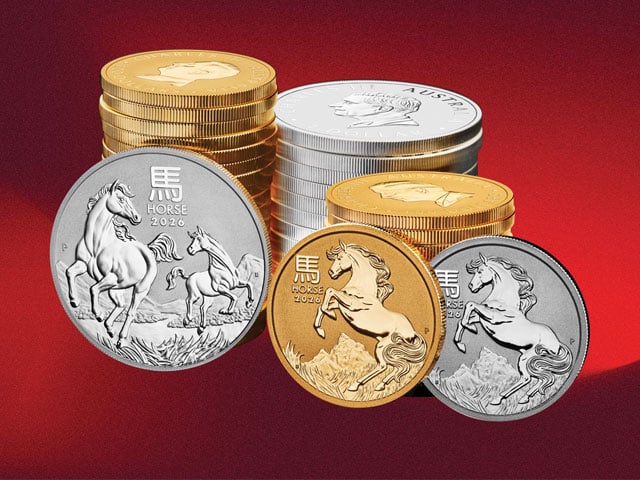Gold v superannuation funds

Gold prices rose by 27.86% in the 2019/20 financial year. This was a hugely positive performance in comparison to the median return delivered by diversified superannuation funds, which ranged from -2.1% to +1% over the same period, depending on the investment strategy of the fund.
Gold’s strong performance in the past financial year continues a primary bull market trend that has been in place since the turn of the century. From end December 1999 to end June 2020, the precious metal rose by 486% (9.49% annualised) in Australian dollar (AUD) terms.
This bull market has been driven by multiple factors, including:
- The severe economic shocks (NASDAQ crash, the Global Financial Crisis, European Debt Crisis and COVID-19 pandemic) that have hit the global economy in the past 20 years.
- The significant decline in interest rates and long-term government bond yields over this time, with the Reserve Bank of Australia (RBA) cash rate 95% lower today relative to where it was at the end of 1999.
- An increase in demand for gold, driven by consumer markets in Asia, central bank buying and the growth of gold exchange traded funds (ETFs) in Western financial markets
In the past 15 years, these factors have helped gold outperform traditional asset classes, and diversified investment strategies.
The tables below highlights the median performance of superannuation funds over multiple time periods to the end of June 2020. It also displays the returns of the assets that are held in these funds in comparison to gold’s performance.
Diversified Investment Strategies
Investment
1 year
3 year
5 year
7 year
10 year
15 year
All growth
-2.1
6.2
6.6
8.9
8.8
6.8
High growth
-0.9
5.9
6.7
8.3
8.4
6.6
Growth
-0.5
5.3
6.2
7.5
7.7
6.4
Balanced
0.3
4.5
4.8
6.1
6.4
5.6
Conservative
1
3.8
4.2
5
5.4
5
Gold
27.86
16.6
11
10.18
5.71
10.51
Asset classes
Investment
1 year
3 year
5 year
7 year
10 year
15 year
Australian equities
-7.6
5.2
6
7.5
7.7
6.6
International equities (unhedged)
5.2
10.8
9.4
13
12.4
7.3
Australian listed property
-20.7
2.3
4.7
7.7
9.4
3.1
Global listed property
-17.6
-1.9
1.6
4.4
8.1
5
Australian bonds
4.2
5.6
4.8
5.1
5.6
5.8
International bonds (hedged)
5.2
4.7
4.8
5.3
6
6.4
Cash
0.8
1.5
1.7
2
2.7
3.7
Gold
27.86
16.6
11
10.18
5.71
10.51
The tables indicate the fund performance % to end June 2020. Source: The Perth Mint, Chant West, World Gold Council
The tables make it clear that over 15 years gold has been by far the highest performing single asset class, rising by 10.51% per annum. This result is significantly ahead of the second-best performing asset class, which increased by less than 7.50% per annum.
The performance of gold over the short-to-medium term (one through to 10 years) has also been impressive. As demonstrated by the data, the asset was one of, if not the, highest performing asset class over most timeframes.
How much does this mean in monetary terms?
The graphic below charts the outcome from investing AUD 10,000 in gold 15 years ago and AUD 1,000 each following year and compares this to results from an identical investment in the median performing ‘growth’ superannuation fund.
We chose ‘growth’ funds for comparison as this is what the majority of Australians invest in with their superannuation. We included the additional AUD 1,000 contribution each year given most Australians do make regular contributions to their superannuation fund.
Note the chart does not take into account transaction fees or taxes etc, which can vary depending on which asset class or investment structure you are analysing.
The chart shows that in total, the AUD 25,000 invested in gold (AUD 10,000 up front and AUD 1,000 each year for 15 years) would have grown to almost AUD 75,000, whilst the money in a regular superannuation fund would have grown to just over AUD 45,000.
There will, of course, be time periods where regular superannuation funds outperform the gold price and the above graph should not in any way be interpreted as a message that Australians should solely invest in gold at the expense of the assets that make up their superannuation fund.
Instead, it merely highlights the fact that gold can also deliver strong long-term returns, and that the yellow metal can play an important role as part of a diversified investment strategy.
What does the future hold?
Whilst there are no guarantees, a solid case can be made that going forward, gold prices will remain biased to the upside. Demand is expected to be supported by investors looking to protect and grow capital in an environment of negative real yields and expensive asset valuations.
Demand is also likely to be bolstered by the economic fallout from steps taken to control the spread of COVID-19 as the unprecedented fiscal and monetary policy stimulus fuels concerns about higher inflation.
Should those concerns be realised, then it would not surprise to see gold lead the way in terms of asset class performance for some time to come.
DISCLAIMER
Past performance does not guarantee future results. The information in this article and the links provided are for general information only and should not be taken as constituting professional advice from The Perth Mint. The Perth Mint is not a financial adviser. You should consider seeking independent financial advice to check how the information in this article relates to your unique circumstances. All data, including prices, quotes, valuations and statistics included have been obtained from sources The Perth Mint deems to be reliable, but we do not guarantee their accuracy or completeness. The Perth Mint is not liable for any loss caused, whether due to negligence or otherwise, arising from the use of, or reliance on, the information provided directly or indirectly, by use of this article.













